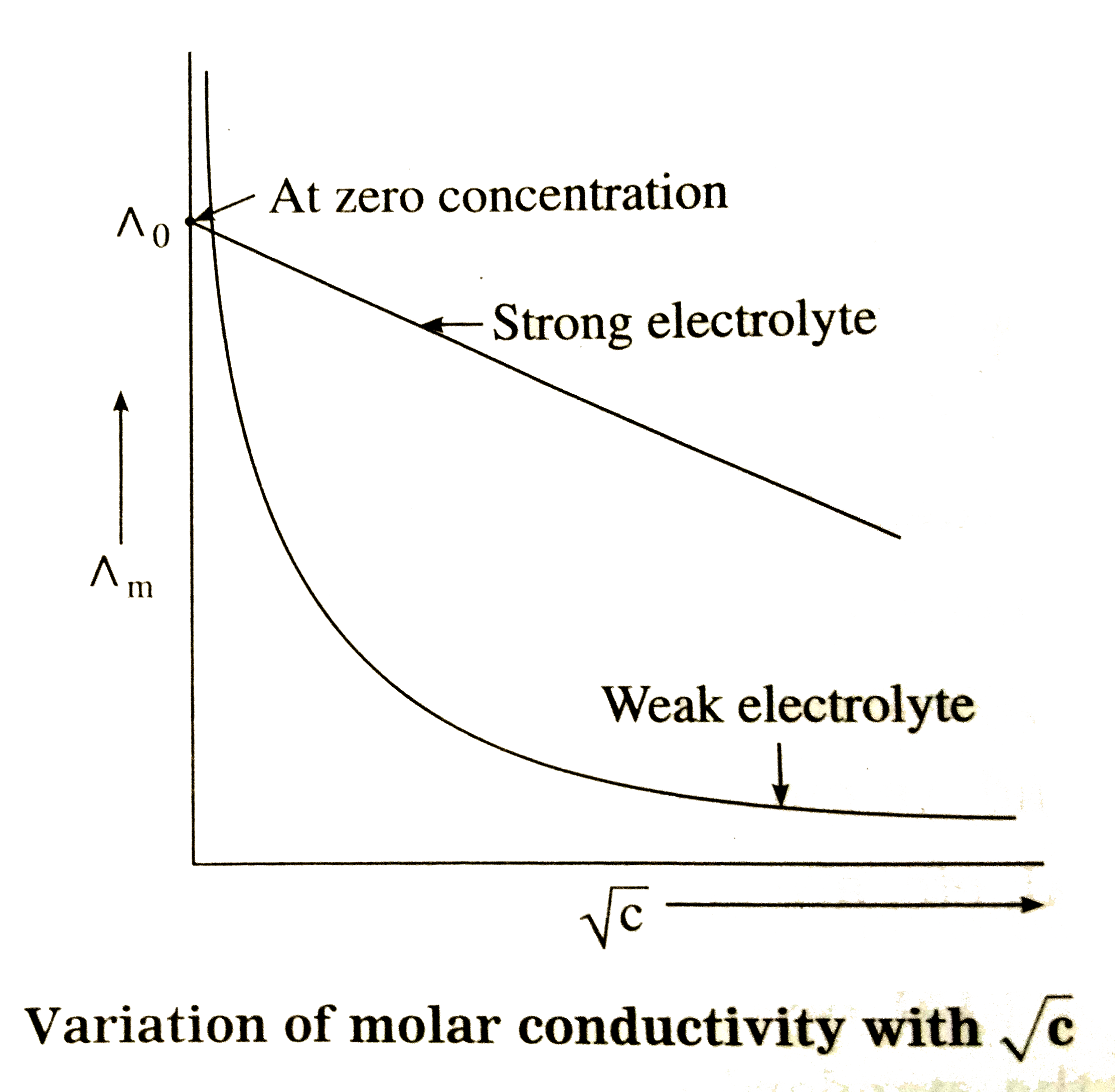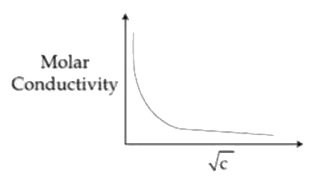Explain the variation of molar conductivity with concentration for strong and weak electrolytes.
(1) Molar conductivity is the conductance of all the ions produced from one mole of an electrolyte. The molar conductivity of both, strong and weak electrolytes increases with dilution or the decrease in concentration of the electrolytic solution.
As the dilution increase , the dissociation of the electrolyte increases, hence the total number of ions increases, therefore, the molar conductivity increases.
(3) Molar conductivity ∧m is given by ∧m=kC=k×V where k is conductivity and C or V are concentration or dilution of the solution respectively.
(4) On dilution, the molar conductivity of strong electrolytes increase rapidly and approaches to a maximum limiting value at infinite dilution or zero concentration and respresented as ∧∞ or ∧0 or ∧0m .
(5) In case of weak electrolytes, the molar condutivity is low and condutivity is low and increase slowly in high concentration region but incerease rapidly at low concentration or high dilution since the extent of dissocitate inrease with dilution rapily.
For strong electrolytes, the linear variation of molar conductivity (Am) with the concentration is represented by Kohlrausch relation, ∧m=∧0−a√c where a is a constant .
∧0 values for strong electrolytes can be obtained by extrapolating the linear graph to zero concentration (or infinite dilution). However A, for the weak electrolytes cannot be obtained by this method, since the graph increases exponentially at very high dilution and does not intersect ∧m axis,

Similar Questions
Which of the following plots represents correctly the variation of molar conductivity with dilution for a strong electrolyte?
View SolutionWhich of the following equations corrects the molar conductivity with concentration for a strong electrolyte?
View SolutionThe variation of molar conductivity wih concentration of an electrolyte (X) in aqueous solution is shown in the given figure .

The electrolyte X is :View SolutionFor a dilute solution of a strong electrolyte, the variation of molar conductivity with concentration is given by
View SolutionFor a dilute solution of a strong electrolyte, the variation of molar conductivity with concentration is given by
View SolutionThe variation of molar conductivity wih concentration of an electrolyte (X) in aqueous solution is shown in the given figure .

The electrolyte X is :View SolutionThe variation of molar conductivity wih concentration of an electrolyte (X) in aqueous solution is shown in the given figure .

The electrolyte X is :View SolutionRead the given passage and answer the questions number that follow :
Molar conductivity increases with decrease in concentration. This is because the total volume, V, of solution containing one mole of electrolyte also increases. It has been found that decrease in K on dilution of a solution is more than compensated by increase in its volume. Physically, it means that at a given concentration, Am can be defined as the conductance of the electrolytic solution kept between the electrodes of a conductivity cell at unit distance but having area of cross-section large enough to accommodate sufficient volume of solution that contains one mole of the electrolyte. When concentration approaches zero, the molar conductivity is known as limiting molar conductivity and is represented by the symbol Λm The variation in Am with concentration is different for strong and weak electrolytes.
Is the variation in Λm with concentration same or different for weak and strong electrolytes ?View SolutionDescribe the characteristics of variation of molar conductivity with dilution for :
(a) a weak electrolyte (b) a strong electrolyte
How are these explained qualitatively?View SolutionWhich of the following graph correctly represents the variation of molar conductance (Δm) with dilution for a strong electrolyte ?
View Solution

